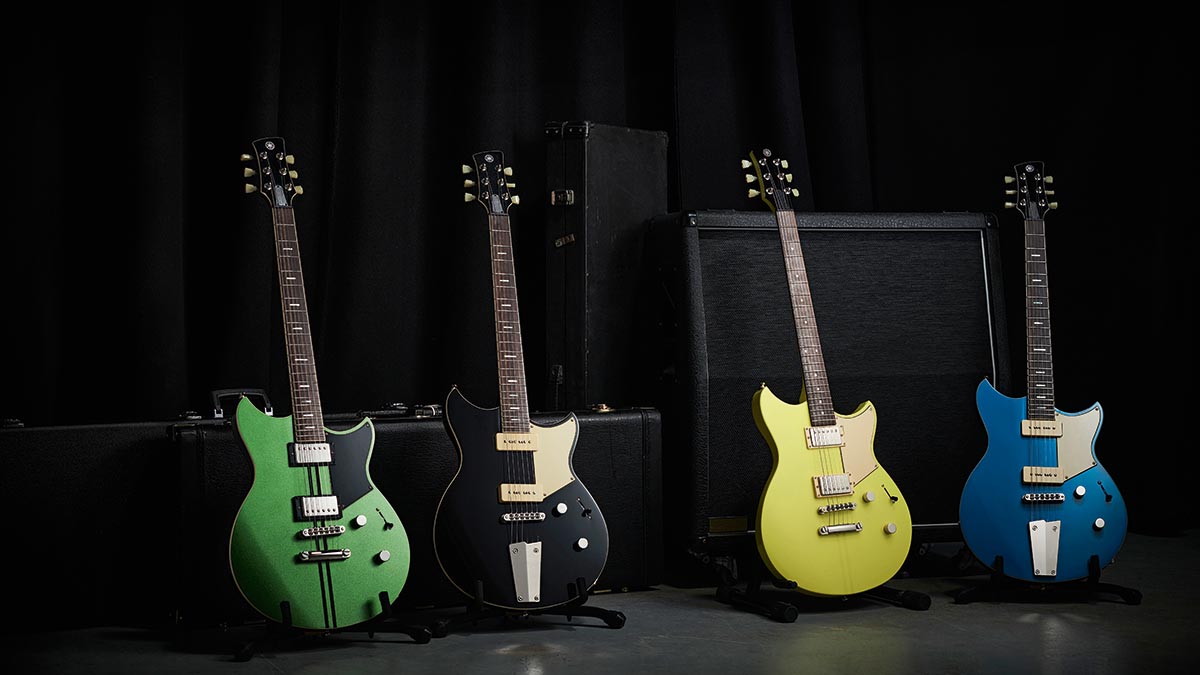Guitar World Verdict
One of the sales slogans of the original Revstars was ‘Just Different Enough’, and that’s not been forgotten on these second-generation models. They’re not trying to be ‘better’ versions of a classic design. Instead, they are very much their own thing, underpinned by excellent build quality with a unique feature set.
Pros
- +
Resonant, playable design.
- +
Dry Switch.
- +
Graphite-reinforced necks.
- +
Attractive price and modding potential on RSE20/RSS20/RSS02T.
- +
Tidy builds.
Cons
- -
RSP02T more pricey so try before you buy.
- -
Not everyone will get the Focus Switch passive boost on RSS20/RSS02T.
You can trust Guitar World
Combining Yamaha’s long and storied history with a dash of motorcycle ‘Café Racer’ heritage, plus a mixture of Japanese craft styles, Revstar originally launched in 2015 after quite a lengthy gestation period.
We were among the many involved in evaluating the various prototype stages, which occurred around the world, and the time and expense involved in the process was certainly a rarity in our experience. The final multi-level Revstar range was impressive, although (barring a couple of additional models) it remained rather static.
Oddly, too, there were no flag-waving Revstar signature artists, though Yamaha Artist Services (YASLA) in Los Angeles crafted many custom artist models – not for public consumption – that hinted at the many directions in which Revstar could go.
There’s little doubt the new Mk II models are informed by seven years of feedback. It’s typical Yamaha: a slow-moving corporation that doesn’t act on whim or ‘flavor of the month’.
Outwardly, the new guitars don’t mess with the recipe too much, but, as we explain, pretty much every feature has been evaluated and tweaked, and new ones have been added.
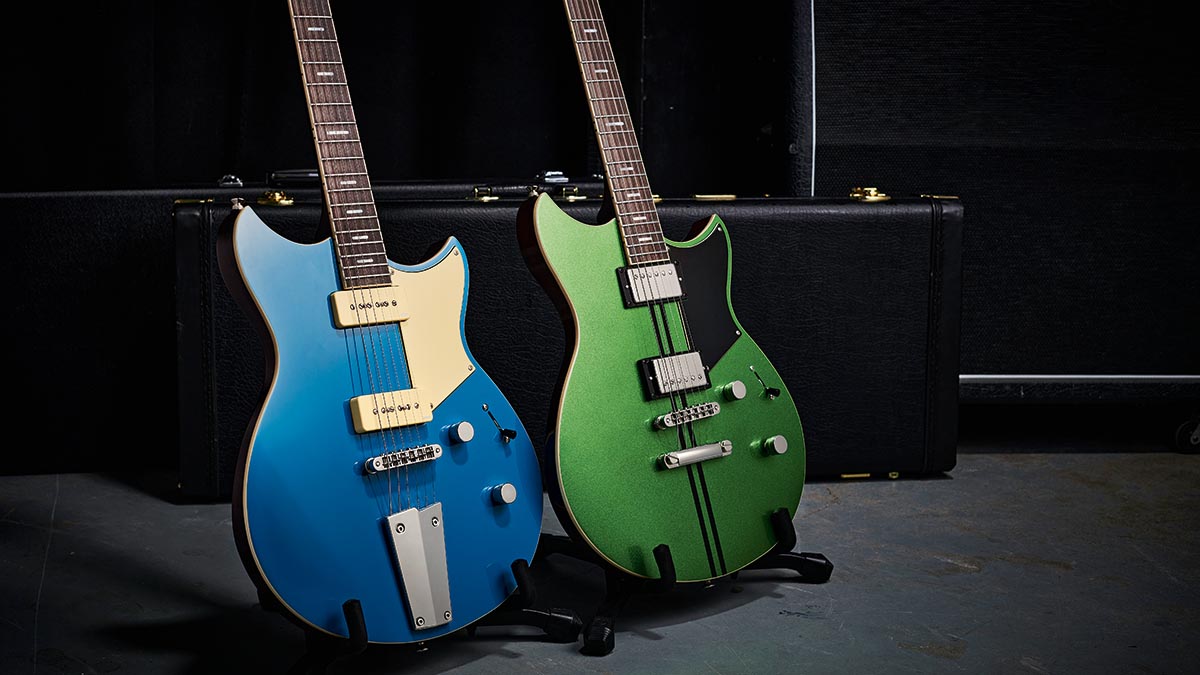
So, what’s changed? Let’s start with the body. It retains the original Revstar’s outline style – clearly inspired by Yamaha’s classic SG outline, with the bass-side pointed horn pulled upwards, along with the lesser-known Super Flighter from 1977 – but has been slightly increased in size, and is now chambered mahogany throughout the new range.
There’s a thin maple top (approximately 6mm), as before, on the higher level Standard and Professional models, and the latter level also gets two thin carbon graphite reinforcement strips placed under the maple top, in between the bridge and tailpiece and behind it.
Like the originals, these are slab bodies with Strat-style forearm and rib-cage contours, but they’re not bolt-ons and they follow the Gibson protocol in terms of scale length.

The glued-in necks on all models slot full-width into the body and extend under the neck pickup. In addition, two strips of carbon graphite – exclusive to the Standard and Profession models only – flank the two-way adjustable truss rod within the three-piece mahogany necks.
A final difference is that the Professional level gets a dose of Yamaha’s Initial Response Acceleration (IRA) treatment, “which applies specific vibrations to release stresses in the instrument for a ‘played in’ tone”.
Still with the chassis construction, another major upgrade for some players will be the stainless steel jumbo frets on our Standard and Professional models. The radius of the rosewood fingerboard on all models has also changed slightly, from the 350mm (13.75 inches) of the previous guitars to 305mm (12 inches).
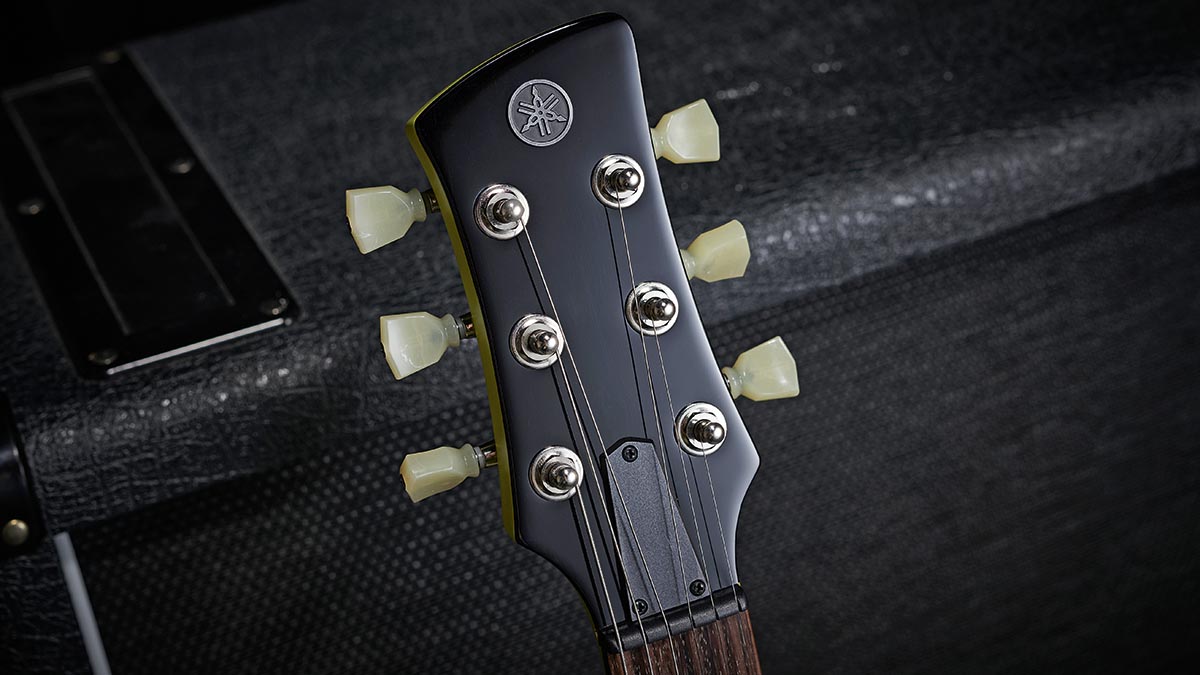
The upper two tiers also have binding around the top edge of the bodies, ’boards and headstocks, with small bar fingerboard inlays; the Element models are unbound with dot inlays.
As with the previous models, all the guitars use a tune-o-matic-style bridge, which is paired on the dual-humbucking ‘20’ models with a stud tailpiece, or on the dual-soapbar single-coil ‘02’ models with a distinct custom tailpiece that featured on the similar soapbar-equipped original 502T.
Previously, the parts were satin-finished, but here (including that custom tailpiece) they are bright, shiny nickel-plate. The tuners seem identical across the levels, a rather nice enclosed style with slightly green-ish keystone buttons and a smooth positive action.
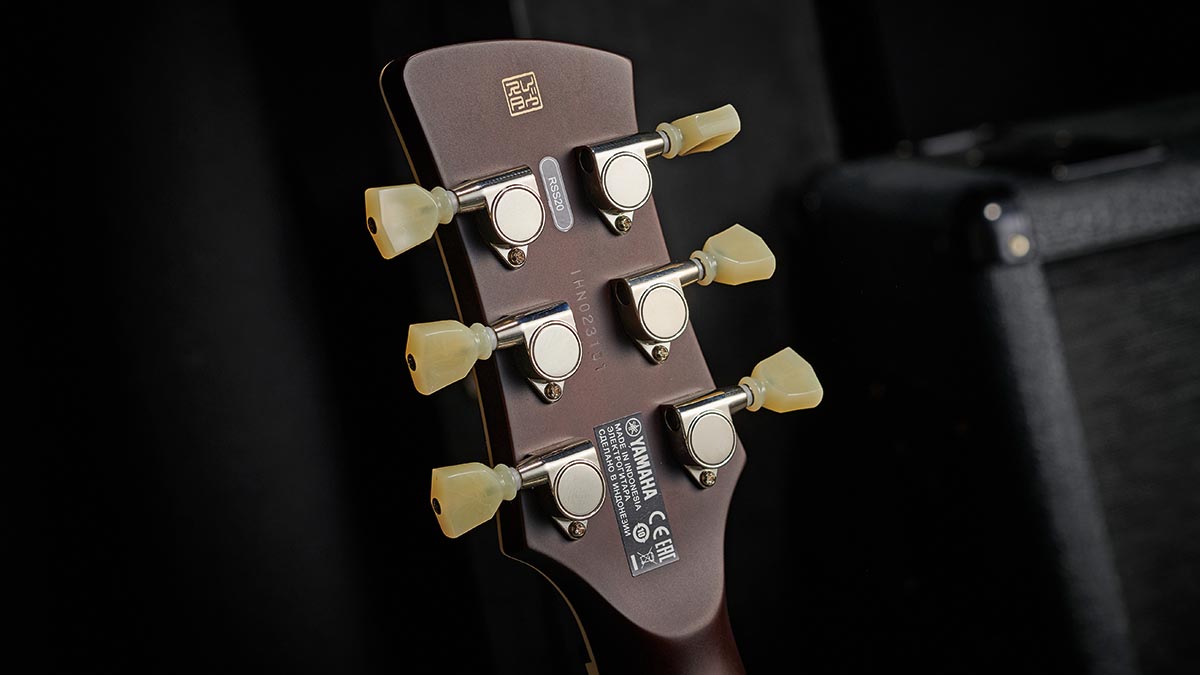
The actual covered humbuckers are quoted as VH3 neck and bridge on the Element, and VH5 on the Standard and Professional – both sets apparently with Alnico V magnets. The VP5 neck and bridge soapbar single coils feature only in the two upper tiers.
As before, the controls are simply master volume and tone, the latter with a pull switch to engage either the Dry Switch on the Element models (a high-pass filter that we saw on the original series) or the Focus Switch on the Standard and Professional models: a new Mk II feature.
These guitars might be made in factories over 3,000 miles apart and span quite a price range, but the actual craft is very similar: in no way does the RSE20 feel ‘cheap’ compared with the RSP02T.
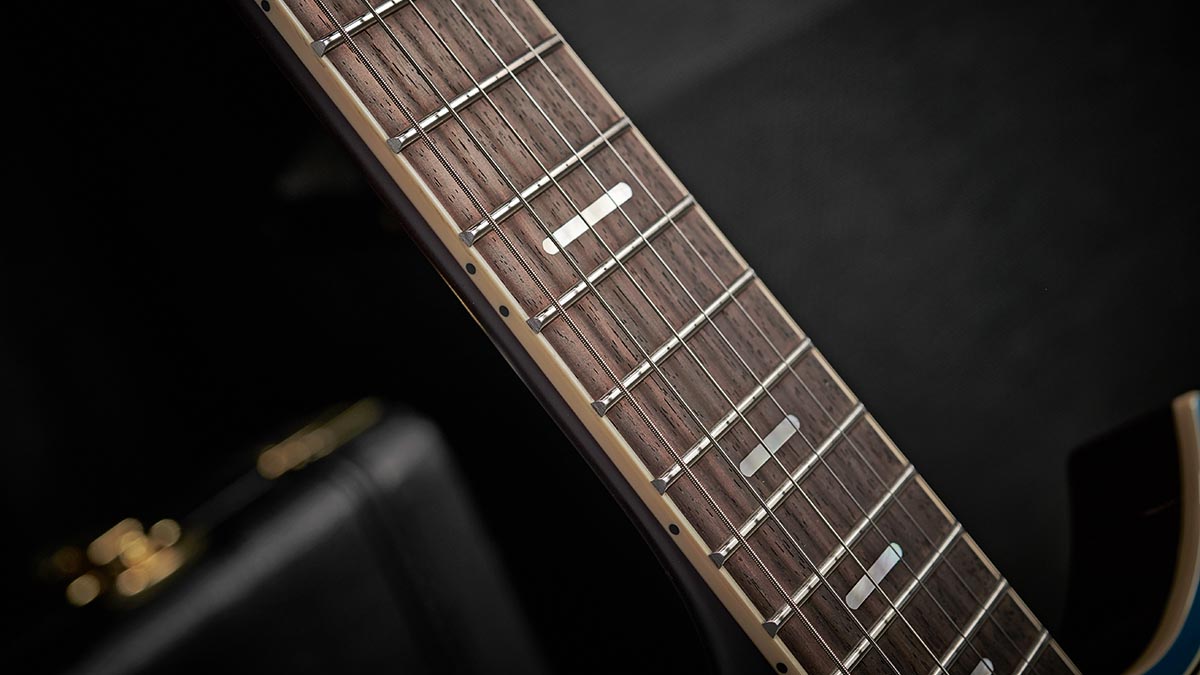
The rear cavity cover on the RSE20 isn’t quite as cleanly recessed, the fret ends are left a little sharp unlike the nicely domed ends to the Standard, and the fretwire is slightly wider and lower on the Element model, too.
We must say, however, that these are effectively production prototypes. Another small difference is that the Element’s tune-o-matic is a smaller-width ABR-1-style, whereas the other tiers use a wider travel Nashville-style unit.
Before Revstar, all of Yamaha’s electric guitars proudly displayed a block-style Yamaha headstock logo. Here, it’s replaced by just the brand’s tuning fork logo on a raised button-sized disc: the only mention of Yamaha is on a (removable) country of origin sticker on the back of the headstock.

Feel & Sounds
We’re seeing quite a shift to lighter guitars in the market, but while these new Revstars might be quite chambered, none of our samples are what you’d call feather light.
Early original Revstars we evaluated, such as the RS502T and RS820CR, came in at 3.98kg (8.76lb) and 4kg (8.8lb) respectively, while a quartet of models we reviewed later had a range between 3.83kg (8.4lb) and 4.04kg (8.9lb).
Our four Mk II models today range from the 3.52kg (7.76lb) of the the RSE20 to 3.86kg (8.5lb) for the RSP02T, which are a little lighter with a 0.34kg (0.75lb) variance.
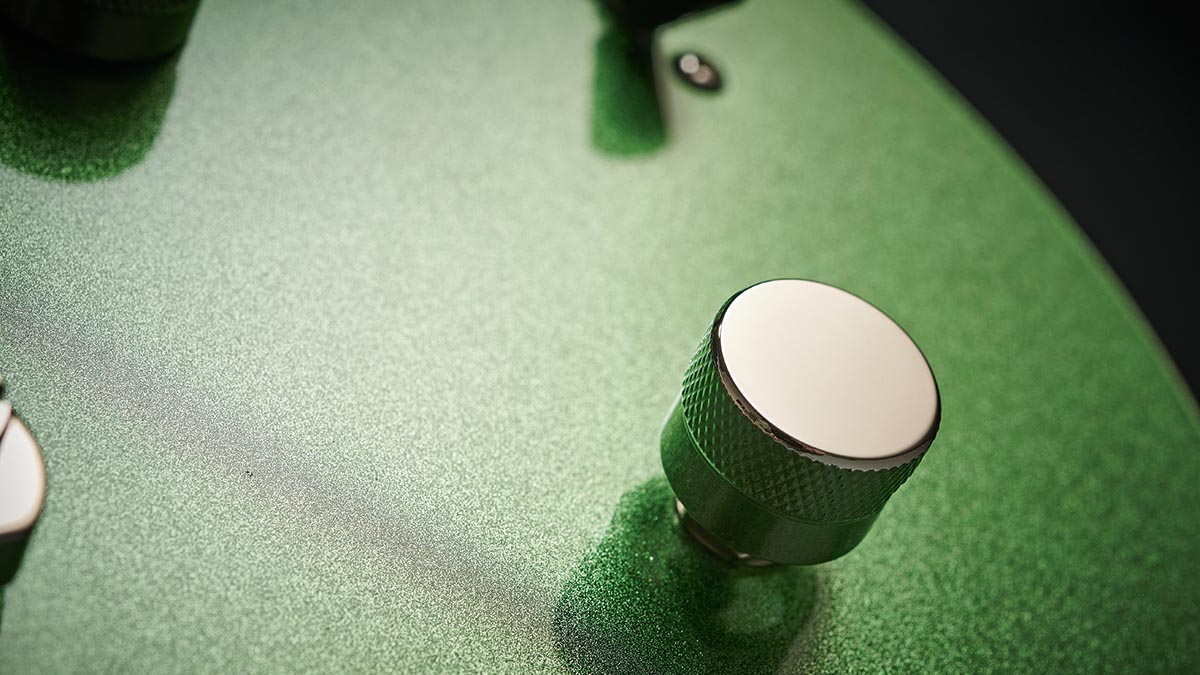
Aside from the unspecified body enlargement, our four guitars’ bodies all measure 347mm (13.6 inches) in width and pretty much 430mm (16.69lb) from the base to the top of the bass-side horn, and 42mm (1.65 inches) in depth, very slightly thinner than the 44mm (1.7-inch) depth of the originals.
For reference, a Les Paul is 330mm (13 inches) wide by 438mm (17.2 inches) long with a rim depth of 50mm (2 inches), rising to just over 60mm (2.4 inches) at the peak of its dome top.
In reality, the guitars certainly don’t feel ‘big’ and they don’t feel light, or indeed chambered. In fact, whereas with many sealed semi-solid designs you can tap the body with your fingernails and easily hear the hollow areas, you really hear very little hollowness here.
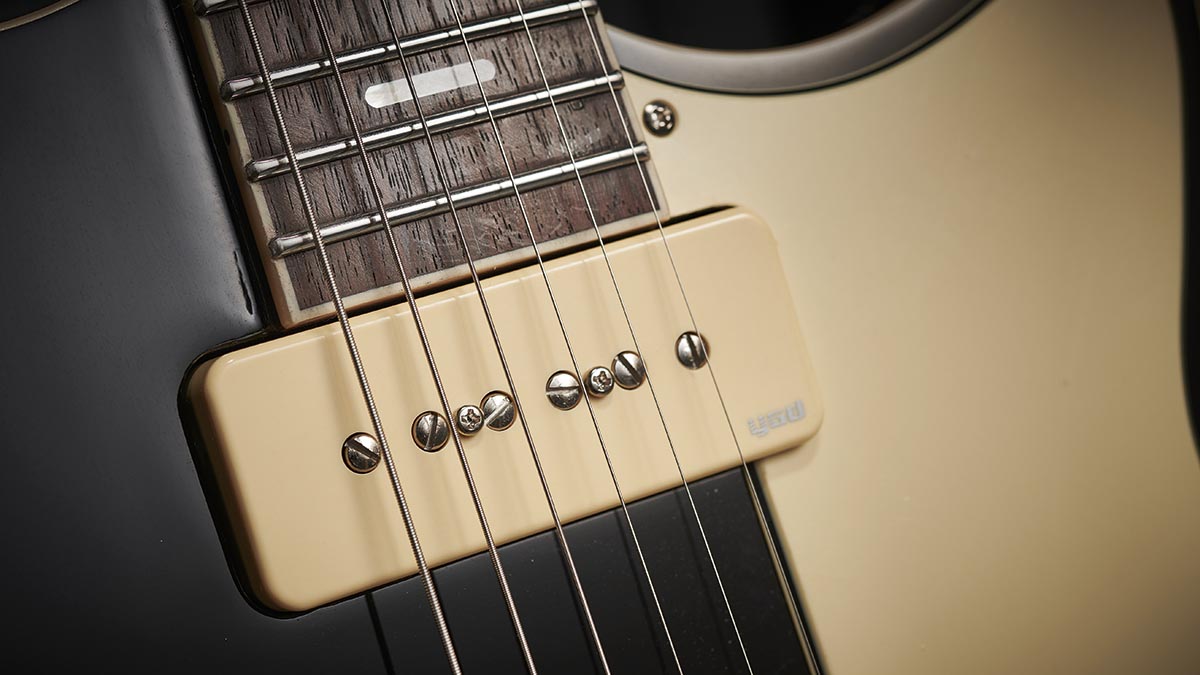
They feel like mainstream solidbodies – and good ones at that. We can’t help thinking that the ‘semi’ side of this design is used to impart some depth and resonance, akin to good lightweight woods that much higher level guitars might use. These really don’t feel like inert lumps, and even the RSE20 feels nice and alive, and is comfortable played seated or strapped on.
The neck shape has gone through some changes, too. First, the neck back is now a slinky satin. The nut drops in width and, as ever, there’s slight variance here. Yamaha specs 41.9mm, which is pretty much bang on the average measurement for our quartet.
Yamaha mistakenly specs the 12th-fret width at 56.8mm (our average measurement is 53mm), which is the width at the 22nd fret. In depth, we have on average 20.75mm at the 1st fret and 23.95mm by the 12th, so in lower positions that’s similar to the previous model (although that had a slightly wider nut width), while the depth and feel is less big as you move up the neck.
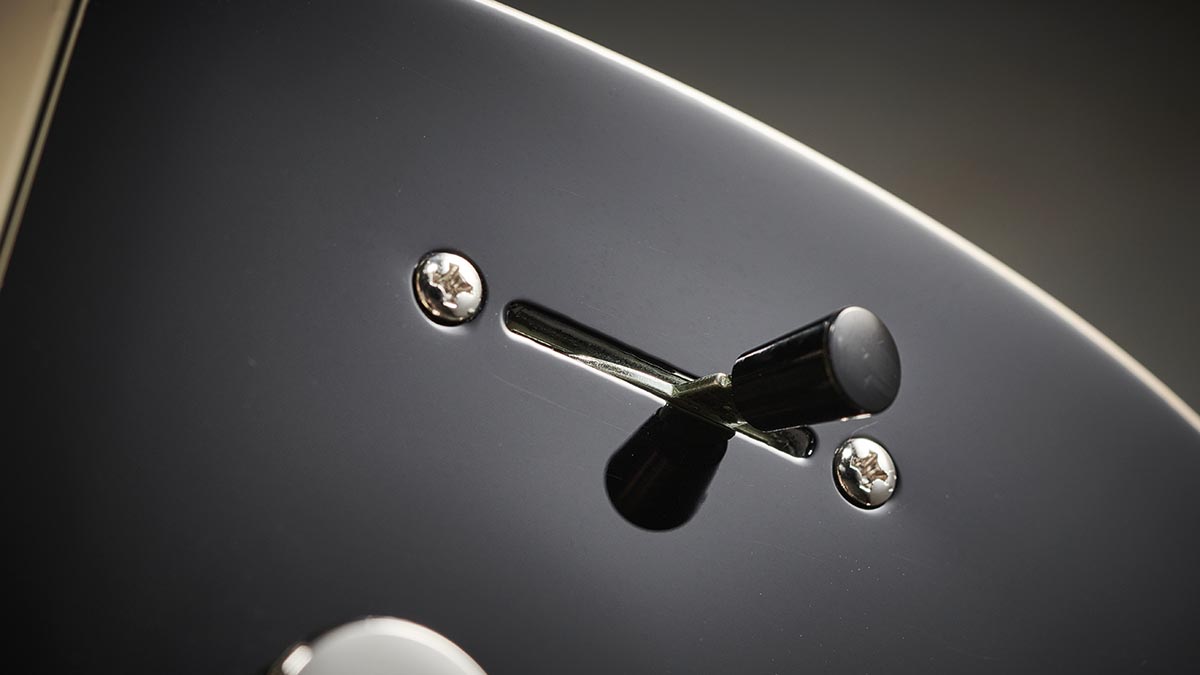
Those original Revstar necks, from the 500-level upwards, really had a lot of girth by the 12th fret. And yet the shape here, with its quite full shoulders and flatter back, feels a little bigger than it actually measures.
Still, as we’ve seen before, these models are very hard to tell apart in feel, particularly those made in Yamaha’s Chinese acoustic factory compared with the higher level Japanese guitars. Swapping from the Element to Standard, let alone the Professional, you really don’t get any impression of basic, better, best.
With such consistency across the style you might expect the same in terms of sounds. Starting with the humbucking Standard, we’re met with a Gibson-esque, not-too-hot humbucking voice.
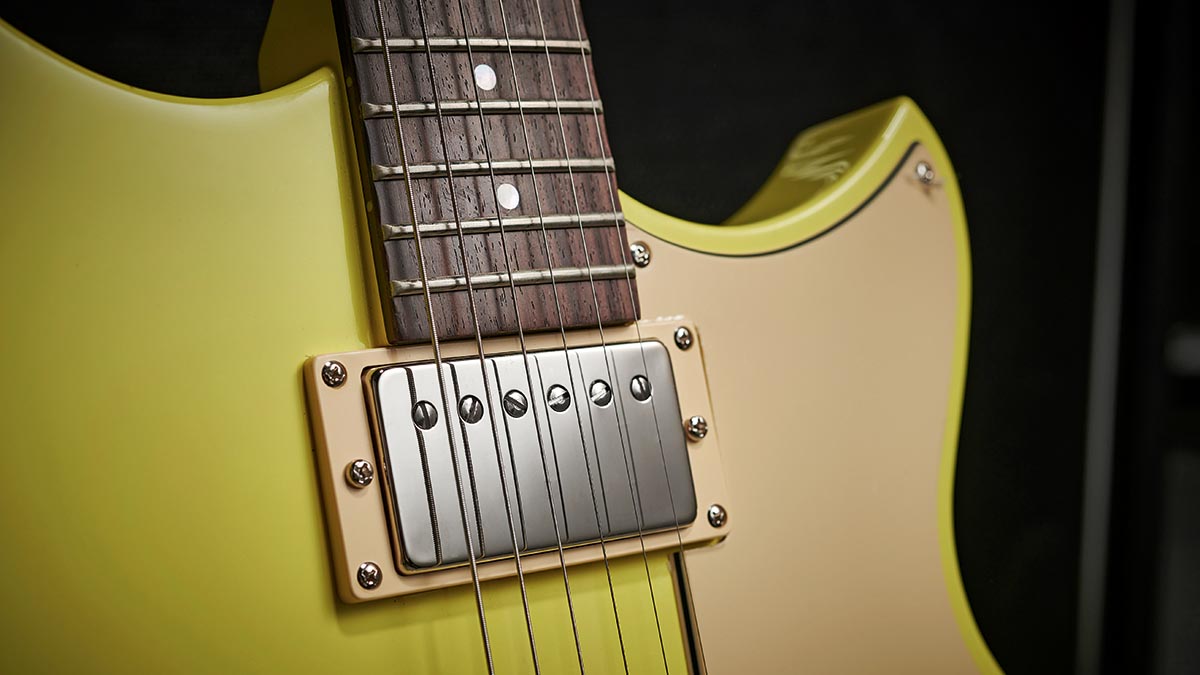
It’s a considered voice that’s very mainstream, in that the bridge humbucker balances girth and power, with a typically slightly rounded high-end, less sharp than the Burstbucker 2 on our Gibson Les Paul Classic reference. Moving to the neck unit, there’s an impression of thickness – soupy and vocal, PAF-y but again a little rounded in the highs.
The mix is bouncy, just as you’d expect, and in position two there’s a very similar high-end response, but a slightly out-of-phase honky flavor in the lower positions.
Position four has the same character, though just a little thicker and (with both pickups selected) very similar to slightly rolling off just the neck pickup volume on our Les Paul Classic. All the guitars feature an effective treble bleed circuit, and pulling back the volume does have the effect of restoring a little clarity.
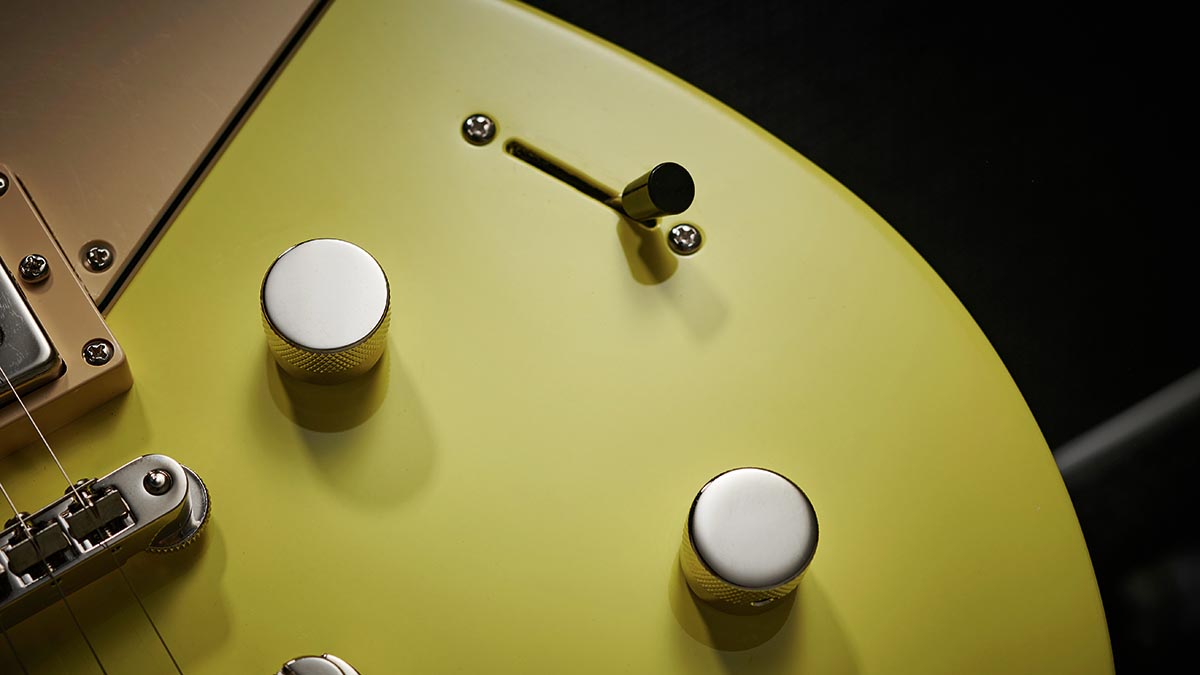
Moving to the Standard soapbar and we have a pretty similar power to our RSS20, albeit crossed with a single-coil, giving slightly less thickness but plenty of bite. Pulling back the volume produces more ‘single-coil’ and is certainly the place to find some jangle.
The Professional version obviously isn’t a million miles away, but it does sound noticeably clearer, which is simply down to the guitar’s construction if the pickups are actually the same, as is the circuit.
Slammed through a low-output gain-y amp, you might hear less difference, but it’s there. While that custom tailpiece looks like it should make some difference, in our experimenting, and with the original RS502T, it depends on how you adjust it.
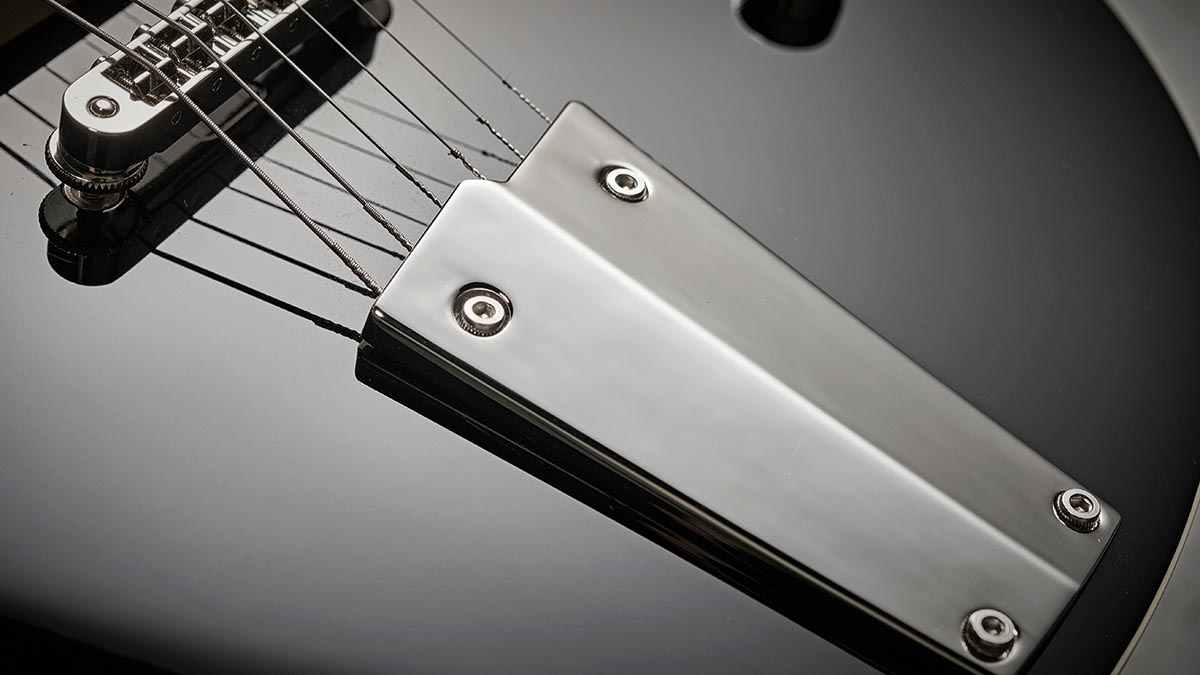
As shipped, the four bolts are screwed right down and that produces less effect to our ears. Remove the two bolts closest to the bridge and it definitely sounds a little looser, more like a trapeze. A subtle effect that you can set how you like.
When the Focus Switch on the RSS20 is introduced, things get fatter and less distinct in the highs. Yamaha’s claim that it’s a passive boost is certainly what you hear, and it slightly lifts everything but the treble: think rolled-off tone control with a slight level boost kicked-in, or even a backed-off wah.
It’s not bad at getting close to those fat Santana sounds, either. The clean tones are also good for jazz, although that lack of clarity won’t be for everyone. There is something of a 15kohm hot ’bucker to the sound, but even a DiMarzio Super Distortion has more clarity than this.
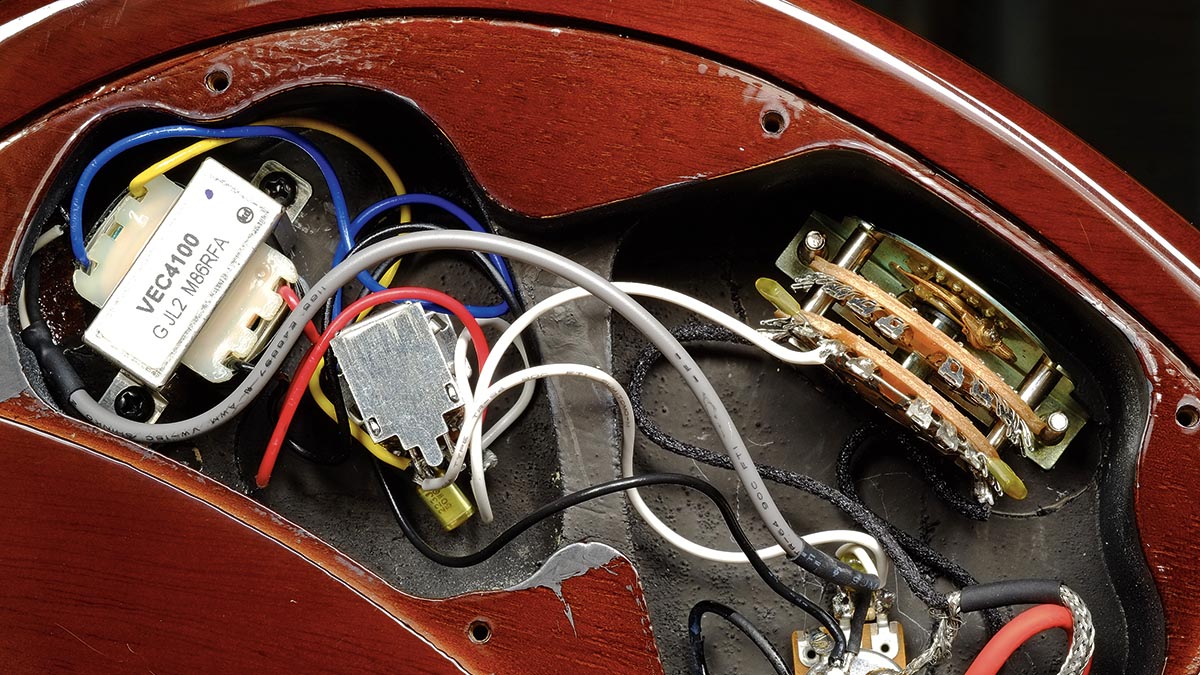
Where it does score is with a fizzy edged high-gain voice. Frankly, the Standard sounds huge, especially when you engage position two with that slight honk. That said, it just might be the most divisive feature on these new guitars, and we’re sitting on the fence.
Unfortunately, during our test time it emerged that the RSE20’s humbuckers were off-spec – a shame because the guitar itself is really quite superb, not least at the price.
If its correct pickups go down the hot vintage vibe of the Standard (which we’re told is what they should do) then once combined with the Dry Switch, which thins the sound for a more ‘Fender’ vibe, the RSE20 might well emerge as a serious bargain and a really excellent modding platform.
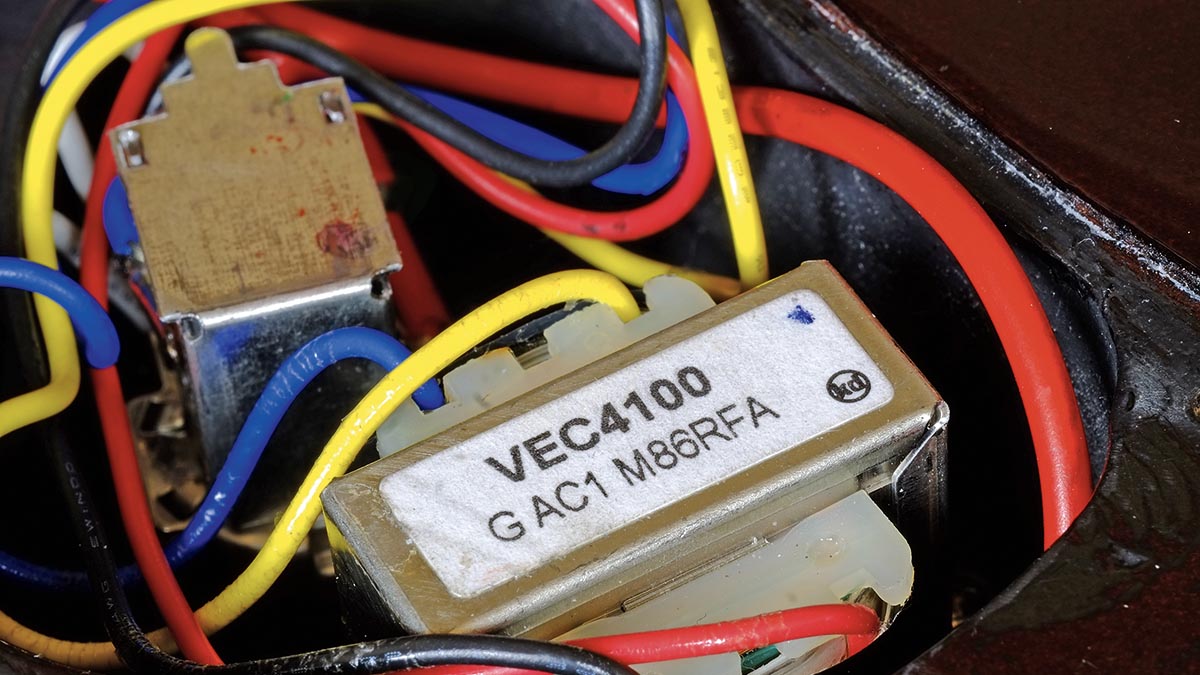
Verdict
Creating a successful new guitar design on an international level is far from easy and a major reason why so many makers stick closely to designs that, in many cases, are more than five decades old. Revstar might not have changed the guitar landscape, but there’s a sense of progression here – certainly not desperation to save a sinking ship.
We don’t really buy the new chambered design as a method of substantial weight reduction. None of the guitars are that much lighter than the first iterations, nor are they lightweight; the ‘right weight’ is closer. They feel business-like: fit for purpose without being overweight.
But even the lowly RSE20 has a lively response: the sort of thing you’d experience on a higher level instrument. The Standard takes that foundation and adds the graphite neck reinforcement (at worst some insurance for the neck staying stable) and stainless-steel frets, and the Pro model simply refines those features for a guitar that easily competes at its price point and higher.
Sounds are well chosen and very mainstream, but the five-way switching is a viable take on the usual offering, and the treble bleed circuits help to retain clarity at lower outputs.
Do we miss some true single-coil sounds on the humbucking models? A little. And as fans of the original Dry Switch, we’re only just getting our heads around the new Focus Switch. That said, if you wanted to convert Focus to Dry it’s easily done with just a couple of very cheap components.
One of the sales slogans of the original Revstars was ‘Just Different Enough’, and that’s not been forgotten on these second-generation models. They’re not trying to be ‘better’ versions of a classic design. Instead, in typical Yamaha style, they are refreshingly very much their own thing, underpinned by excellent build quality with a unique feature set.
Specs – Yamaha Revstar RSE20
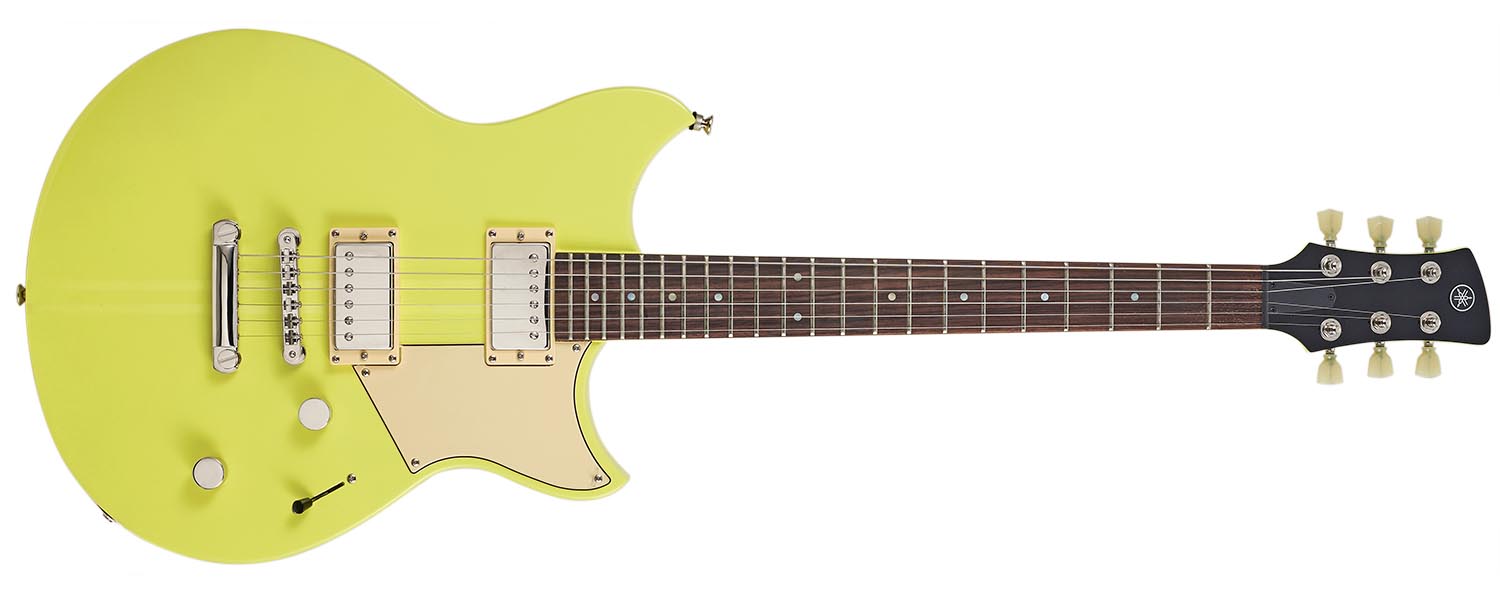
- PRICE: £399 / $499
- ORIGIN: Indonesia
- TYPE: Double-cut, solidbody electric
- BODY: Chambered mahogany
- NECK: 3-piece mahogany, glued-in
- SCALE LENGTH: 629mm (24.75”)
- NUT/WIDTH: Black synthetic/42mm
- FINGERBOARD: Rosewood with pearloid dot inlays, 304mm (12”) radius
- FRETS: 22, jumbo
- HARDWARE: Tune-o-matic-style bridge and stud tailpiece, die-cast enclosed tuners – nickel-plated
- STRING SPACING, BRIDGE: 52.5mm
- ELECTRICS: 2x YGD-designed VH3 covered humbuckers, 3-way lever pickup selector switch, volume and tone (with pull-push Dry Switch high‑pass filter)
- WEIGHT (kg/lb): 3.52/7.74
- OPTIONS: None
- RANGE OPTIONS: See RSS20 and RSP20
- LEFT-HANDERS: Yes, the RSE20L in Swift Blue and Black (£399)
- FINISHES: Neon Yellow (as reviewed), Black, Red Copper, Swift Blue, Vintage White – gloss polyurethane body with satin neck back
- NB: The quoted prices are approximate and reflect in store prices from main UK dealers
Specs – Yamaha Revstar RSS20
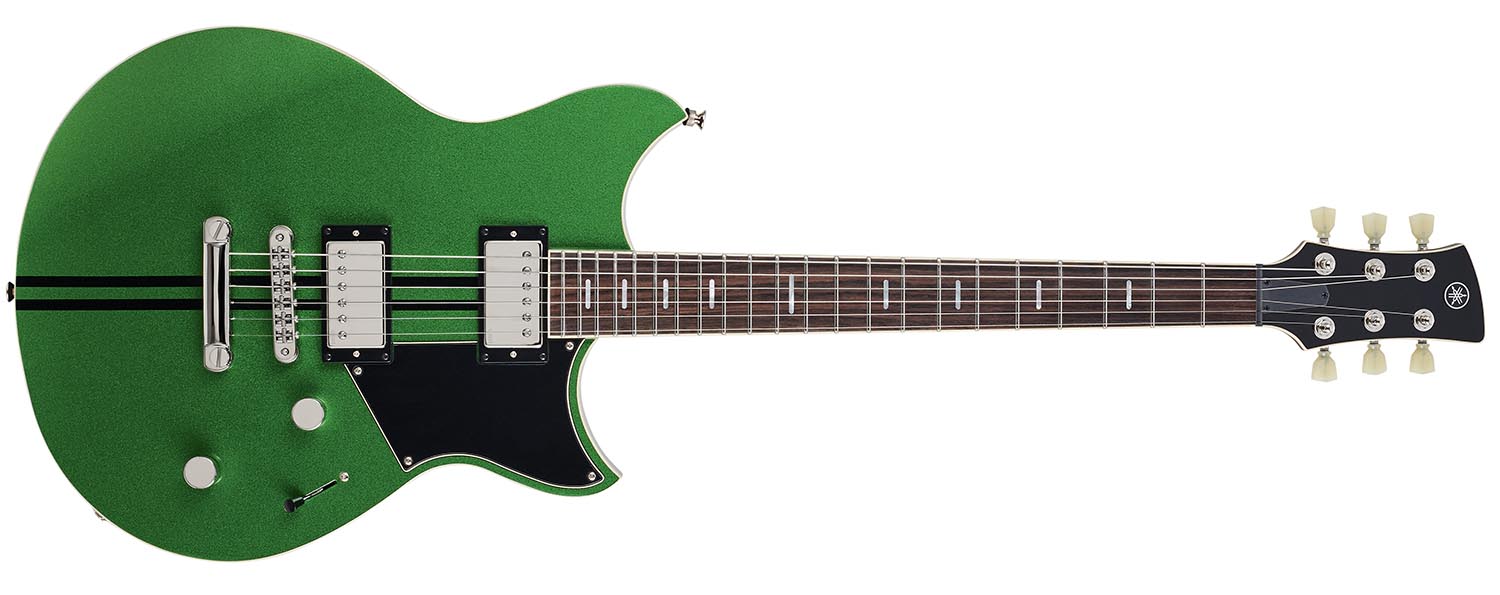
- PRICE: £649 / $799
- ORIGIN: Indonesia
- TYPE: Double-cut, solidbody electric
- BODY: Chambered mahogany with thin maple cap
- NECK: 3-piece mahogany with carbon graphite reinforcement, glued-in
- SCALE LENGTH: 629mm (24.75”)
- NUT/WIDTH: Black synthetic/41.96mm
- FINGERBOARD: Single-bound rosewood with pearloid bar inlays, 304mm (12”) radius
- FRETS: 22, jumbo stainless steel
- HARDWARE: Tune-o-matic-style bridge and stud tailpiece, die-cast enclosed tuners – chrome-plated
- STRING SPACING, BRIDGE: 52.5mm
- ELECTRICS: 2x YGD-designed VH5 covered humbuckers, 5-way lever pickup selector switch, volume and tone (with pull-push Focus Switch boost)
- WEIGHT (kg/lb): 3.69/8.12
- OPTIONS: None
- RANGE OPTIONS: See RSE20 and RSP20
- LEFT-HANDERS: The RSS20L comes in Swift Blue and Black at £649
- FINISHES: Flash Green (as reviewed), Black, Hot Merlot, Sunset Burst, Swift Blue, Vintage White – gloss polyurethane body with satin neck back
Specs – Yamaha Revstar RSS02T
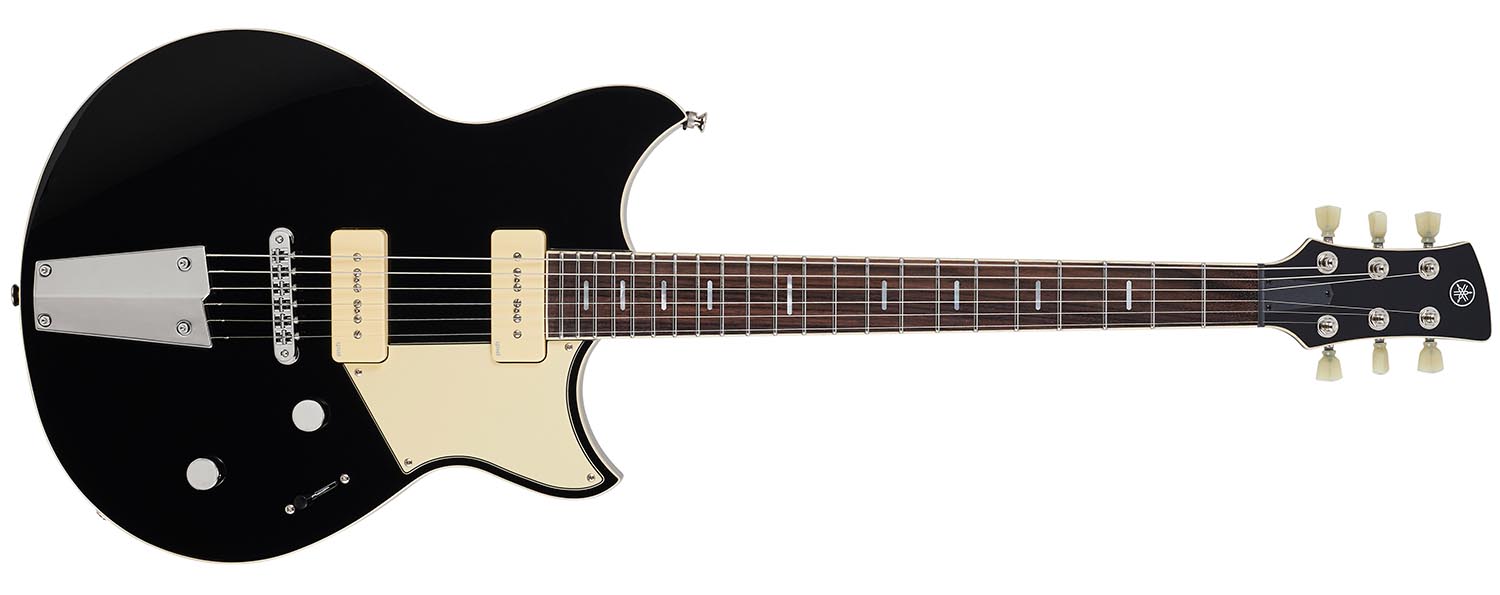
- PRICE: £649 / $799
- ORIGIN: Indonesia
- TYPE: Double-cut, solidbody electric
- BODY: Chambered mahogany with thin maple cap
- NECK: 3-piece mahogany with carbon graphite reinforcement, glued-in
- SCALE LENGTH: 629mm (24.75”)
- NUT/WIDTH: Black synthetic/42.28mm
- FINGERBOARD: Single-bound rosewood with pearloid bar inlays, 304mm (12”) radius
- FRETS: 22, jumbo stainless steel
- HARDWARE: Tune-o-matic-style bridge and custom tailpiece, die-cast enclosed tuners – nickel-plated
- STRING SPACING, BRIDGE: 52.5mm
- ELECTRICS: 2x YGD-designed VP5 soapbar single coils, 5-way lever pickup selector switch, volume and tone (with pull-push Focus Switch boost)
- WEIGHT (kg/lb): 3.55/7.81
- OPTIONS: None
- RANGE OPTIONS: See RSP02T
- LEFT-HANDERS: Not this model
- FINISHES: Black (as reviewed) Hot Merlot, Sunset Burst, Swift Blue – gloss polyurethane body with satin polyurethane neck back
Specs – Yamaha Revstar RSP02T
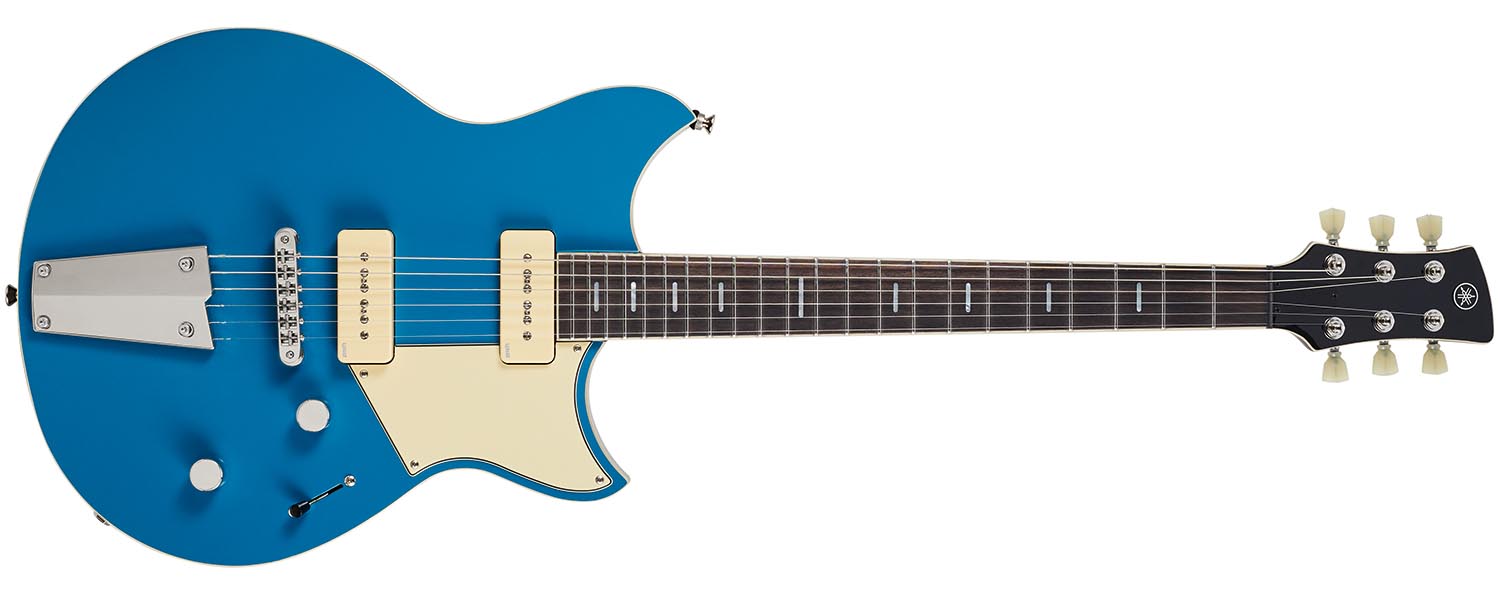
- PRICE: £1,599 / $1,999
- ORIGIN: Japan
- TYPE: Double-cut, solidbody electric
- BODY: Chambered mahogany with thin maple cap and graphite reinforcement
- NECK: 3-piece mahogany with carbon graphite reinforcement, glued-in
- SCALE LENGTH: 629mm (24.75”)
- NUT/WIDTH: Black synthetic/42.1mm
- FINGERBOARD: Single-bound rosewood with pearloid bar inlays, 304mm (12”) radius
- FRETS: 22, jumbo stainless steel
- HARDWARE: Tune-o-matic-style bridge and custom tailpiece, die-cast enclosed tuners – nickel-plated
- STRING SPACING, BRIDGE: 52.5mm
- ELECTRICS: 2x YGD-designed VP5 soapbar single coils, 5-way lever pickup selector switch, volume and tone (with pull-push Focus Switch boost)
- WEIGHT (kg/lb): 3.86/8.49
- OPTIONS: None
- RANGE OPTIONS: The other MIJ models (also £1,599) are the twin-humbucking RSP20 in Moonlight Blue, Sunset Burst and Swift Blue, and the RSP20X in Rusty Brass Charcoal
- LEFT-HANDERS: No
- FINISHES: Swift Blue (as reviewed) Crisp Gold, Sunset Burst, – gloss polyurethane body with satin polyurethane neck back
- CONTACT: Yamaha

Dave Burrluck is one of the world’s most experienced guitar journalists, who started writing back in the '80s for International Musician and Recording World, co-founded The Guitar Magazine and has been the Gear Reviews Editor of Guitarist magazine for the past two decades. Along the way, Dave has been the sole author of The PRS Guitar Book and The Player's Guide to Guitar Maintenance as well as contributing to numerous other books on the electric guitar. Dave is an active gigging and recording musician and still finds time to make, repair and mod guitars, not least for Guitarist’s The Mod Squad.
“I was in a frenzy about it being trapped and burnt up. I knew I'd never be able to replace it”: After being pulled from the wreckage of a car crash, John Sykes ran back to his burning vehicle to save his beloved '76 Les Paul
“It holds its own purely as a playable guitar. It’s really cool for the traveling musician – you can bring it on a flight and it fits beneath the seat”: Why Steve Stevens put his name to a foldable guitar
“A virtuoso beyond virtuosos”: Matteo Mancuso has become one of the hottest guitar talents on the planet – now he’s finally announced his first headline US tour
